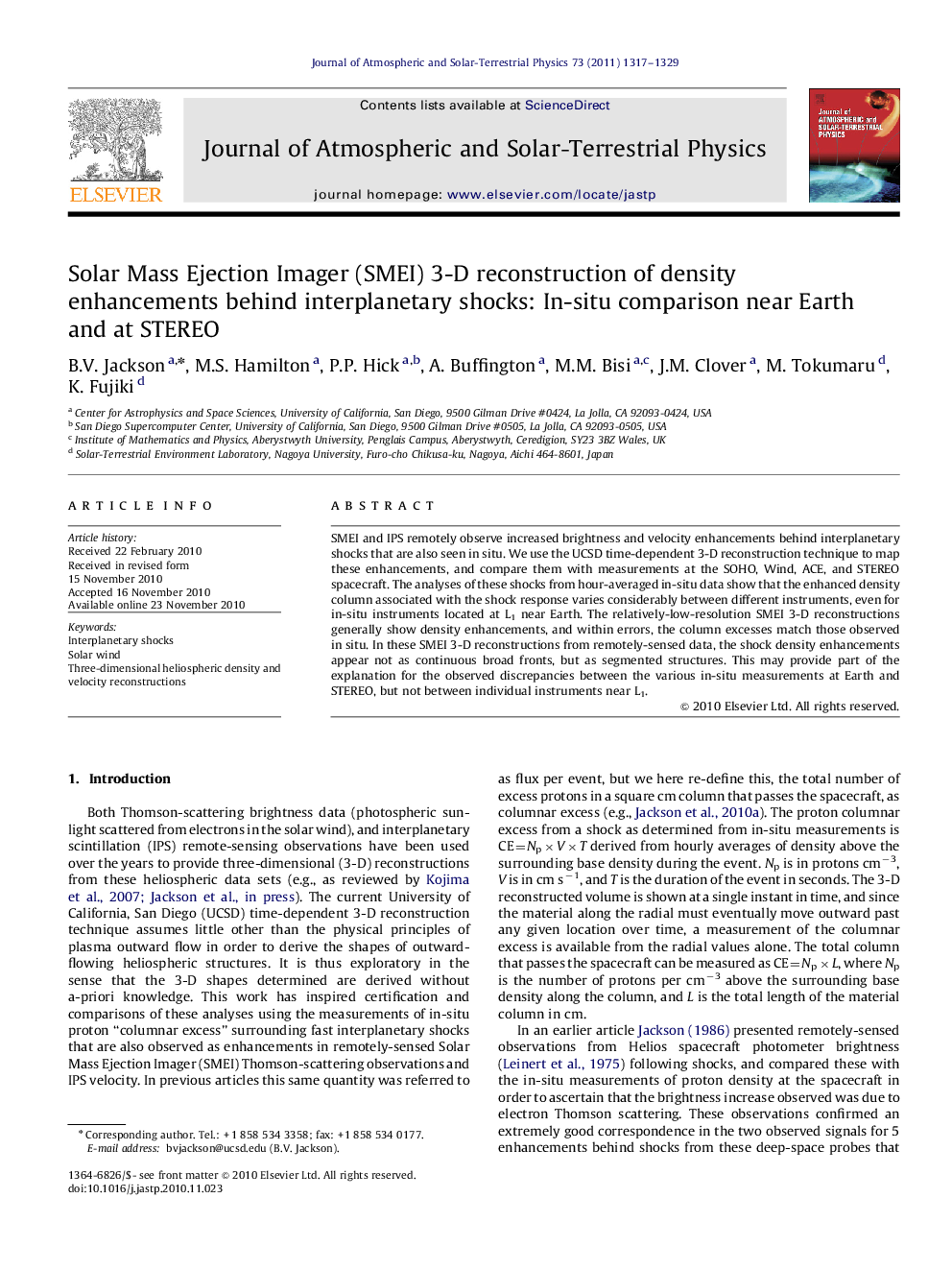| Article ID | Journal | Published Year | Pages | File Type |
|---|---|---|---|---|
| 1777250 | Journal of Atmospheric and Solar-Terrestrial Physics | 2011 | 13 Pages |
SMEI and IPS remotely observe increased brightness and velocity enhancements behind interplanetary shocks that are also seen in situ. We use the UCSD time-dependent 3-D reconstruction technique to map these enhancements, and compare them with measurements at the SOHO, Wind, ACE, and STEREO spacecraft. The analyses of these shocks from hour-averaged in-situ data show that the enhanced density column associated with the shock response varies considerably between different instruments, even for in-situ instruments located at L1 near Earth. The relatively-low-resolution SMEI 3-D reconstructions generally show density enhancements, and within errors, the column excesses match those observed in situ. In these SMEI 3-D reconstructions from remotely-sensed data, the shock density enhancements appear not as continuous broad fronts, but as segmented structures. This may provide part of the explanation for the observed discrepancies between the various in-situ measurements at Earth and STEREO, but not between individual instruments near L1.
Research Highlights► SMEI and IPS heliospheric analyses track density column enhancements behind shocks. ► There is no indication of excess brightness from entrained dust in these measurements. ► The shock density enhancements appear as patchy, segmented structures. ► Enhanced shock sheath density is measured differently by L1 in-situ instruments
